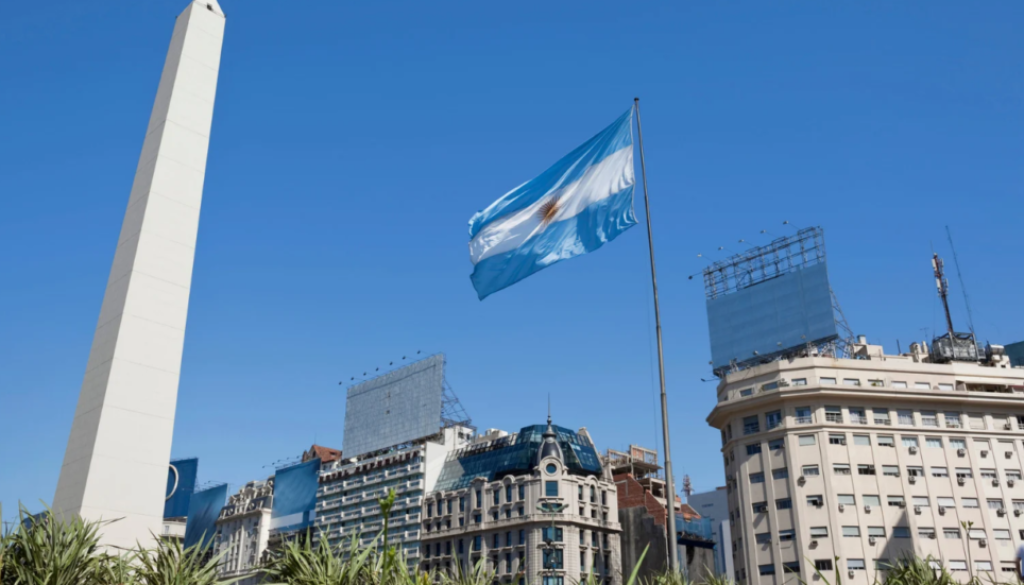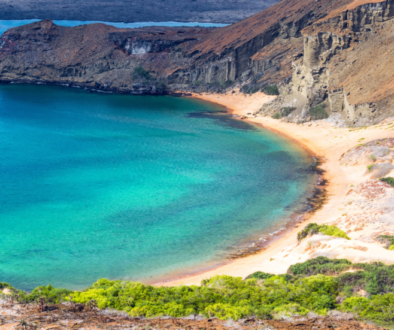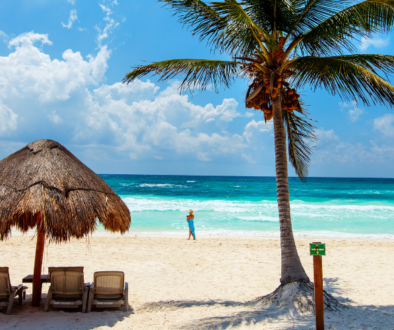The Beat of Argentina’s Urban Heart: Exploring The Top 10 Cities
Argentina, a land of diverse landscapes and vibrant cultures, is a dream for the intrepid traveler and the culturally curious alike. From the chic streets of Buenos Aires to the stunning natural backdrops of Ushuaia, the “end of the world,” the allure of Argentina’s cities is as rich and dynamic as the country itself.
In this extensive travel guide, we take you through the heartbeat of Argentina, unveiling the top 10 most visited cities. Each urban center offers a mosaic of historical legacy, contemporary life, and a dash of local flair that is uniquely Argentinian.
Buckle up as we hop from cosmopolitan capitals to tranquil oases, and from historical townships to bustling business hubs. Pack your virtual bags and get ready to immerse yourself in the Argentine way of life as we explore the 10 cities that encapsulate the spirit of Argentina.
1. Buenos Aires: The ‘Paris of South America’
Begin with a tango in the very heart of Argentina, Buenos Aires. The sprawling metropolis, often touted as the ‘Paris of South America,’ seamlessly blends European charm with its own distinctive Latin American verve. Renowned for its rich history, vibrant arts scene, and passion for football, the multifaceted Buenos Aires ensures there’s something for everyone.
Uncover the secrets of San Telmo’s cobbled streets, and revel in the explosive energy of La Boca district. Museum aficionados can feast on the masterpieces of Recoleta, while culinary connoisseurs can indulge in the city’s legendary asado.
Must-See Highlights:
- Recoleta Cemetery, the final resting place of Evita Perón and a myriad of Argentine notables.
- The historic Teatro Colón, one of the world’s largest opera houses.
- The bustling Plaza de Mayo, a stage for political activism and home to the Casa Rosada, Argentina’s presidential palace.
2. Cordoba: A Tapestry of Tradition and Scholarship
Further inland, the city of Cordoba awaits with a blend of colonial architecture, a thriving nightlife, and an enviably youthful population thanks to its many universities. Proudly known as the intellectual center of Argentina, Cordoba maintains its historical significance while exuding an unmistakable modern enthusiasm.
Bask in the tranquility of its parks and the beauty of its Jesuit Block, an UNESCO World Heritage Site. For those seeking adventure, the nearby Sierras Cordobesas offer hiking trails and the promise of natural splendor.
Must-See Highlights:
- The Manzana Jesuítica, a historic quarter featuring the National University of Cordoba and several Jesuit buildings.
- The Plaza San Martín, a hub of local life and the site of historical and cultural events.
- The Archeological Museum, home to significant pre-Columbian and indigenous exhibits.
3. Mendoza: The Land of Sun and Good Wine
Mendoza, tucked against the Andes, is the gateway to some of Argentina’s prime wine-growing regions. The laid-back city is famous for its Malbec and boasts a sunny climate that invites alfresco dining and an unhurried pace of life. For wine enthusiasts, Mendoza is Mecca, offering bountiful vineyards and cellar doors galore.
Beyond the vineyards, adrenaline junkies can tackle the fast-flowing rapids of the Mendoza River, while the more culturally inclined will appreciate the city’s historic plazas and the serenity of General San Martín Park.
Must-See Highlights:
- Parque General San Martín, a sprawling parkland designed by renowned landscape architect Charles Thays.
- The Plaza Independencia, the city’s central square lined with palm trees and monumental gates.
- The Mercado Central, a foodie’s paradise where you can savor local delicacies and artisanal products.
4. Rosario: Birthplace of an Argentine Icon
Nestled along the Paraná River, Rosario offers an eclectic mix of architectural styles, flourishing green spaces, and a thriving cultural scene. This city is more than just an economic powerhouse—it’s the birthplace of Che Guevara and the Argentine flag, symbolizing the historical and revolutionary spirit that still burns within its veins.
Enjoy a leisurely stroll along the riverfront, take in the city’s numerous parks, and connect with the lively local community.
Must-See Highlights:
- The Monumento a la Bandera, a national monument dedicated to Argentina’s flag.
- The Parque de la Independencia, featuring a beautiful lake, a rose garden, and a popular amusement park.
- The Cordoba pedestrian street, a bustling promenade with shops, cafes, and street performers.
5. San Miguel de Tucumán: Where Argentine Independence Was Declared
San Miguel de Tucumán is where the first Argentine independent government was declared in 1816. History buffs will revel in the city’s role in Argentina’s independence and its colonial remnants, while nature lovers can explore the nearby Aconquija mountains.
Intriguing museums, stunning architecture, and a distinct local cuisine make Tucumán a city that offers a rich tapestry of experiences.
Must-See Highlights:
- The Casa Histórica de la Independencia, the site of the declaration of Argentina’s independence.
- The Tucumán Government Palace, an impressive neoclassical building with stunning interiors open to the public.
- A range of museums, from the Folklore Museum to the Tucumán Archeological Museum, each offering a unique perspective on the city’s history and culture.
6. Salta: The Jewel of the North
Known for its colonial charm and the scenic Tren a las Nubes (Train to the Clouds), Salta is a city that captivates with its Andean backdrop and a remarkably preserved heritage. Its pleasant climate and the warmth of its people make Salta an inviting stop on any Argentine adventure.
Savor traditional empanadas, visit the Salta Cathedral with its intricate baroque design, and take in the birds-eye views from the top of Cerro San Bernardo.
Must-See Highlights:
- The Tren a las Nubes, a train ride offering breathtaking views of the Andes and crossing the famous viaducts.
- The Cabildo de Salta, a historic city hall and meeting place for the South American Congress in the War of Independence era.
- The MAAM (High Altitude Archaeological Museum), which houses one of Argentina’s most significant archaeological finds—the Llullaillaco mummies.
7. Junín de los Andes: Amphitheater of Fly Fishing
Located in the heart of Patagonia, Junín de los Andes is often referred to as the “Amphitheater of Fly Fishing” due to its proximity to world-renowned trout fishing lakes and rivers. This small town embodies the Patagonian spirit with its welcoming simplicity and stunning natural beauty.
For those eager to cast a line or simply soak in the picturesque landscapes, Junín de los Andes is a tranquil retreat.
Must-See Highlights:
- Lanín National Park, home to the majestic Lanín Volcano and a variety of flora and fauna unique to the region.
- The Chapel of the Immaculate Virgin, a place of worship that offers panoramic views of the town and the Chimehuin River.
- The Mapuches’ Pucará, an archeological site that provides insight into the indigenous Mapuche culture and history.
8. El Calafate: The Gateway to Glaciers
El Calafate is not just a city; it’s the gateway to the awe-inspiring Los Glaciares National Park, home to the iconic Perito Moreno Glacier. This city perched on the southern edge of Lake Argentino is a hub for adventurers and nature enthusiasts eager to explore one of the earth’s last great wildernesses.
From hiking on the glacier to boat tours on Lago Argentino, El Calafate offers a breathtaking array of experiences that showcase the raw power and beauty of Patagonia.
Must-See Highlights:
- The Perito Moreno Glacier, an advancing glacier that provides opportunities for trekking and ice excursions.
- The Glaciarium, a modern museum dedicated to the study of glaciers and the glacier environment.
- The Nimez Reservoir, ideal for bird watching and catching the stunning Patagonian sunset.
9. Ushuaia: The Southernmost City in The World
Widely recognized as the world’s southernmost city, Ushuaia is the capital of Tierra del Fuego—an island province cloaked in mystique and the remote, rugged beauty of the vast southern ocean. Ushuaia serves as a launchpad for expeditions to Antarctica and exploration of the surrounding national parks.
Hike the Martial Glacier, take a trip to the End of the World Train, or enjoy a local delicacy such as king crab—Ushuaia is an adventure unlike any other.
Must-See Highlights:
- The End of the World Museum, offering a fascinating look at the natural and human history of the region.
- The Tierra del Fuego National Park, a sprawling park with dramatic vistas, glacial lakes, and verdant forests.
- The Beagle Channel, where you can take a boat tour to see sea lions, penguins, and perhaps even whales in their natural habitat.
10. Mar Del Plata: Argentina’s Coastal Jewel
Rounding out the top ten is the charismatic coastal city of Mar Del Plata. A beloved Argentine holiday destination, Mar Del Plata embodies the spirit of ‘verano’ (summer) with its pristine beaches, lively boardwalk, and a host of recreational activities.
Whether you’re a surfer seeking the perfect wave, an art lover visiting the city’s many galleries, or a foodie indulging in the freshest seafood, Mar Del Plata offers a lively beach culture that is quintessentially Argentine.
Must-See Highlights:
- The Mar Del Plata Aquarium, featuring an impressive collection of marine life and a focus on conservation.
- The historic Torre Tanque, an art deco water tower offering panoramic views of the city.
- The Esquina de los Poetas, a colorful neighborhood filled with murals and street art dedicated to celebrated poets of Argentina.
Planning Your Journey Through Argentina’s Cities
Exploring Argentina’s diverse cityscapes can be an enriching and unforgettable experience. While each city is a treasure trove in its own right, here are some general tips to help you plan your city-hopping adventure:
Timing Is Everything
The best time to visit Argentina largely depends on which cities are on your itinerary. Buenos Aires and most of the central regions enjoy a temperate climate, with spring (October to December) and autumn (March to May) being ideal for milder weather. Northern cities like Salta and Tucumán tend to be hot throughout the year, while southern cities such as Ushuaia and El Calafate are best visited in the summer months (November to February) when their weather is more hospitable.
Getting Around
Argentina is a vast country, and the distances between cities can be significant. The most common modes of inter-city travel are domestic flights, long-distance buses, and car rentals. Internal flights are frequent and well-connected, especially between major cities. Long-distance buses, while taking longer than flights, offer a more scenic route and are renowned for their comfort. Driving can be an excellent option for those looking to explore off-the-beaten-path destinations at their own pace.
Where to Stay
Each city boasts a range of accommodation options, from luxury hotels to budget hostels. In Buenos Aires, for example, you might want to stay in the upscale neighborhoods of Recoleta or Palermo for easy access to the city’s main attractions. In smaller towns like San Miguel de Tucumán or Rosario, historical hotels or boutique establishments provide a more intimate experience. Research and book your accommodation in advance, especially if traveling during peak tourist seasons.
Experiencing Local Culture
To truly appreciate the essence of each city, engage with the locals and participate in community events, festivals, and activities. In Buenos Aires, attend a live tango show; in Mendoza, join a winery tour; and in Salta, savor an Andean folk music performance. Learning a few basic Spanish phrases can also enhance your interactions and provide a more meaningful cultural exchange.
Budgeting Your Trip
The cost of traveling through Argentina’s cities can vary widely depending on your preferences and the city’s location. Buenos Aires might be more expensive compared to a smaller city like Junin de los Andes. However, there are numerous ways to explore Argentina on a budget, such as taking advantage of free museum days, sampling street food, and choosing affordable public transportation options when available.
Personal Testimonials
“Exploring Buenos Aires was like taking a whirlwind tour of history, arts, and the very soul of the Argentine people. Every corner had a story to tell, and I found myself drawn to its enigmatic energy. From the passionate beats of tango in San Telmo to the serene beauty of Palermo’s parks, the contrasts in the city only serve to deepen its allure.”
- Emily S., World Traveler
“Mendoza’s laid-back atmosphere and the warm, earthy notes of its wines enamored me. I never felt more at peace than when I was amidst the vineyards, watching the Andean peaks turn a golden hue during sunset. The city’s simple sophistication and the genuine kindness of the locals left a lasting impression on me.”
- Thomas L., Wine Enthusiast
“Ushuaia felt like the edge of the world, a place where the raw power of nature is palpable in every gust of wind. Standing at the precipice of ice and ocean, I felt incredibly small yet invigorated by the vastness around me. It’s a city that challenges your perceptions and sparks the spirit of adventure within.”
- Sarah T., Solo Explorer
Argentina’s cities are not just waypoints on a map; they are living, breathing entities that beckon you to partake in their stories and experiences. From Buenos Aires’ grandeur to Ushuaia’s endearing isolation, each city offers a piece of the Argentine puzzle that, when put together, paints a picture of a country that is as diverse as it is spellbinding.
Whether you’re drawn to the cultural capitals, the paradisiacal wine regions, or the boundless adventure of the south, Argentina promises an urban adventure like no other. The best way to understand the country and its people is to head out and explore for yourself.
Ready to chart your course through the heart of Argentina’s urban landscape? Share your favorite Argentine city with us in the comments below and inspire fellow travelers to seek their own Argentinian adventure!



